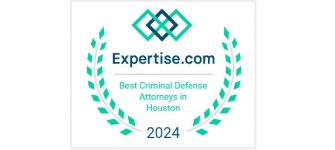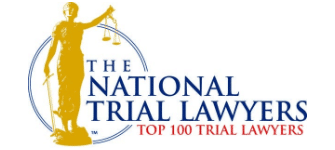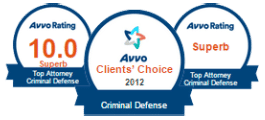Blog
BREACHING TRADE SECRETS CONFIDENTIALITY NOT ALWAYS A CRIME

Computer Program, Source Code, Does not Constitute “Goods” that can be Stolen for Purposes of National Stolen Property Act
By: Houston Criminal Lawyer John Floyd and Paralegal Billy Sinclair
Most legal researchers will tell you that the best starting point for legal research is the statute in question. In 2009, Sergey Aleynikov was charged, and ultimately convicted, of stealing trade secrets from Goldman Sachs & Co. He was sentenced to 97 months in prison. The two statutes under which Aleynikov was convicted and sentenced were the National Stolen Property Act, 18 U.S.C. § 2314 (the “NSPA”) and the Economic Espionage Act, 18 U.S.C. § 1832 (the “EEA”) .
The facts ofUnited States v. Aleynikovare straightforward, reflecting conduct that has become reportedly become endemic to Wall Street. Sergey Aleynikov is a computer programmer, and apparently a very good one. Between May 2007 through June 2009, Goldman Sachs & Co. paid him $400,000 a year to develop a “computer source code for the company’s proprietary high-frequency trading (‘HFT’) system. HFT allows for making “large volumes of trades” in securities and commodities “based on trading decisions effected in fractions of a second … and “are executed on the basis of algorithms that incorporate rapid market developments and data from past trades.” In order to operate its HFT system, Goldman Sachs programs require three components: “(1) market connectivity programs that process real-time market data and executes trades, (2) programs that use algorithms to determine trades to make; and (3) infrastructure programs that facilitate the flow of information throughout the trading system and monitor the system’s performance.”
As lawyers, we would be less than honest if we said we knew exactly how these programs worked. Suffice it to say, it is a complicated system of computer programs that Aleynikov apparently understood very well. His work “focused on developing code for this last category of infrastructure programs in Goldman’s HFT system.”
What is termed “high frequency trading” is a “competitive business that depends in large part on the speed with which information can be processed to seize fleeting market opportunities.” Obviously, with millions of dollars at stake on any given minute, Goldman has a compelling interest in guarding “the secrecy of each component of the system” and does not casually grant license to anyone to use its HFT system.
Like most financial institutions (as well as law firms), Goldman has “confidentiality” policies which bound its employees “to keep in strict confidence all of the firm’s proprietary information, including any intellectual property created by Aleynikov.” These confidentiality policies precluded the computer programmer from taking or using the firm’s proprietary information upon termination of employment with Goldman. In effect, an employee’s “ work product ” belongs to the employers, and by written agreement, the employee it barred from its future use or disclosure.
At some point in 2009 an advanced career opportunity presented itself to Aleynikovv. He was offered, and accepted, a $1 million position as Executive Vice President at Teza Technologies LLC, a Chicago-based “startup” firm that wanted to develop its own HFT system. Specifically, Aleynikov was hired to develop the “market connectivity and infrastructure” components of Teza’s HFT system—much the same thing as he had done for Goldman. Generally, it takes years for a “team of programmers” to develop an “HFT system from scratch,” thus, it was suspicious when Teza’s founder “emailed Aleynikov (and several other employees) in late May “conveying his expectation that they would develop a functional trading system within six months.”
Approximately one week after this email was sent, Aleynikov attended a “going-away party” at Goldman’s. But before he left, Aleynikov “encrypted and uploaded to a server in Germany more than 500,000 lines of source code for Goldman’s HFT system, including code for a substantial part of the infrastructure, and some of the algorithms and market data connectivity programs. Some of the code pertained to programs that could operate independently of the rest of the Goldman system and could be integrated into a new software system. After uploading the source code, Aleynikov deleted the encryption program as well as the history of his computer commands.” He then left the Goldman party and went to his New Jersey home where he “downloaded the source code from the server in Germany to his home computer, and copied some of the files to other computer devices he owned.”
A month later Aleynikov flew from New Jersey to Chicago where he attended meeting with Teza. He had with him a “flash drive and a desktop containing portions of the Goldman source code.” He then returned to New Jersey where he was arrested by the FBI at Newark Liberty International Airport.” Who alerted the FBI or what prompted their interest in Aleynikov is an open question.
THE LAW
The question is: Do you think Aleynikov violated either Act, or was his conduct just a breach of confidentiality? The Federal government believed he committed three criminal offenses. The U.S. Attorney’s office sought, and secured, a three count indictment for the following conduct by Aleynikov:
- Count One: Aleynikov violated the EEA by downloading a trade secret “that is related to or included in a product for or placed in interstate or foreign commence,” with an intent to provide the trade secret, at the injury of its owner, for the economic benefit to anyone other than the owner.
- Count Two: Aleynikov violated the NSPA, which makes it a crime to “transport, transmit or transfer in interstate or foreign commerce any goods, wares, merchandise, securities or money, of the value of $5,000 or more, knowing the same to have been stolen, converted or taken by fraud.”
- Count Three: Aleynikov violated the Computer Fraud and Abuse Act through unauthorized computer access and exceeding authorized access.
Aleynikov from the outset denied any criminal conduct. Pursuant to Rule 12(b)(3)(B) of the Federal Rules of Criminal Procedure, he moved to have all three counts dismissed on the premise that the indictment did not state offense for which he could be convicted. The trial court denied the motion with respect to the EEA and NSPA counts but did dismiss the Computer Fraud and Abuse Act.
With respect to the EEA, the trial court found: 1) the stolen “source code” is a “trade secret;” 2) the HFT system is a “product” to which the source code relates because the “system was developed and modified through the labor of Goldman’s computer programmers; and 3) the HFT system was “produced for” interstate commerce “because it facilitates the rapid execution of trades on financial markets such as the New York Stock Exchange and NASDAQ.” The trial court reasoned that the very purpose of the HFT system is “to engage in interstate and foreign commence.”
With respect to the NSPA, the trial court found that Goldman’s source code for the HFT system was “goods” which were “stolen” because, while the source code is intangible, it “contains highly confidential trade secrets related to the Trading System” and which is “valuable for any firm seeking to launch, or enhance, a high-frequency trading business.”
The jury agreed with the trial court. In 2010, Aleynikov was convicted, sentenced, and denied bail pending appeal because he is a dual citizen of the U.S. and Russia, which made him a “flight risk.” On February 17, 2012, the Second Circuit Court of Appeals issued the following one paragraph order: “Upon due consideration, it is hereby ordered, adjudged, and decreed that the judgment of conviction is reversed on both counts and the matter is remanded to the district court for entry of a judgment of acquittal. An opinion shall follow in due course.”
Apparently some kind of pressure was exerted in the case—either within the three judge panel that issued the “order” or from other judges on the court—because in the subsequent published opinion reversing Aleynikov’s convictions (April 11, 2012) the judgment of “acquittal” was removed. The acquittal’s absence is significant because, as the White Collar Crime Prof Blog reported on August 14, 2012, this allowed the State of New York, through Manhattan District Attorney Cyrus Vance, to file state charges “relating to the same activities.” This could prove to be a sticky constitutional wicket as the White Collar Crime blog notes:
“Arguably, the Fifth Amendment clause does not apply here because the United States and the State of New York are separate ‘sovereignties.’ That ‘dual sovereignties’ exception to the double jeopardy clause has been occasionally questioned but generally remains in force. One possible exception that may apply here since the D.A.’s case will rely on the federal investigation and prosecution (the federal case agent signed the affidavit supporting the state complaint) is when the two governments are acting in concert.”
There are two opposing views in the Aleynikov case. The first view was expressed by Ohio State University law professor Joshua Dressler who told theNew York Timesthe Aleynikov case provides “an exceptionally justifiable reason for the state prosecutor to use a state law to bring a prosecution.” The second view was expressed by the author of the White Collar Crime blog, Lawrence S. Goldman: “I disagree. Mr. Aleynikov has already undergone the trauma and expense and disruption of life that a criminal trial entails. He has already served almost one year in prisonfor a crime he did not commit. Even if convicted on state charges, I predict he will never serve an additional day in jail.”
We agree with the Lawrence Goldman. But we also find the Aleynikov case troubling for other reasons. First, why did the U.S. Attorney Office bring charges under the EEA and NSPA when, as the Second Circuit held, “Aleynikov’s conduct did not constitute an offense under either the NSPA or the EEA …?” The U.S. Attorney had access to, and should have had knowledge of, the same statutes and case law as utilized by the Second Circuit to determine that Aleynikov had not committed either an EEA or NSPA offense. We can only suspect a lot of pressure from Goldman Sachs, which has tentacles throughout the federal government, prompted the immediate filing and swift conviction of Alexnikov on the alleged EEA and NSPA offenses.
Second, at the same time the Manhattan D.A. announced the arrest and filing of state charges against Aleynikov, Goldman Sachs announced that it had been cleared of any wrongdoing by a Securities and Exchange Commission (SEC) investigation into a $1.3 billion subprime mortgage deal by the investment firm. On August 9, 2012, theTimes reported that in February—the same month the Second Circuit issued Aleynikov’s “acquittal” order—the SEC said it would pursue its “civil enforcement action” investigation into Goldman’s shady dealings in the subprime mortgage crisis. And just as the SEC cleared Goldman Sachs in the investigation, the Manhattan D.A. announced his decision to prosecute Aleynikov for his alleged state criminal conduct against the financial giant.
No one at Goldman Sachs has been prosecuted for the role the investment firm played in the corrupt (and criminal) subprime mortgage deals that nearly brought about the financial collapse of this country’s economic system in 2008 and, in fact, the economic systems of rest of the world. We know for sure that Goldman was a party to all the corruption and wrongdoing associated with the subprime mortgage crisis because in 2010 the firm paid $550 million to settle what theTimessaid were “accusations that it sold a mortgage investment that was intended to collapse.” The SEC specifically charged that Goldman did not inform investors that the hedge fund in which they had invested had been bet against by the fund’s manager John Paulson.
And then Goldman Sachs had the unmitigated gall to push for the criminal prosecution of Aleynikov for conduct that may have been reprehensible but was clearly not criminal. As the Second Circuit put it: “The conduct found by the jury is conduct that Aleynikov should have known was in breach of his confidentiality obligations to Goldman, and was dishonest in ways that would subject him to sanctions; but he could not have known that it would offend the criminal law or this particular sovereign.”
What is clear about this case is this: this past February the Second Circuit issued an order of “acquittal” in Aleynikov case and the SEC announced its intention to pursue its civil enforcement action investigation of Goldman. We believe, based on Goldman’s sordid history, that Goldman pushed back—to what extent and at what level, we do not know. What we do know is that over the next five months three beneficial things happened for Goldman: 1) the Aleynikov acquittal order was rescinded, 2) the SEC did an about face and dropped its investigation of Goldman, and 3) the Manhattan D.A. arrested and filed state charges against Aleynikov.
Whether these three events are connected we do not know, but since each event analyzed in its own context is extraordinary, we suspect Goldman used its power to influence all three. It all has the smell of rotten carrion.
And we wonder why the general public has such little faith in our criminal justice system. The rich, and powerful, as a rule, can do no wrong while their enemies are pursued and prosecuted to the fullest extent of the law even when their conduct does not constitute a criminal offense.
By: Houston Criminal Attorney John Floyd and Paralegal Billy Sinclair
John Floyd is Board Certified in Criminal Law by the Texas Board of Legal Specialization
The text of both acts is set out below:
§ 2314. Transportation of stolen goods, securities, moneys, fraudulent State tax stamps, or articles used in counterfeiting.
Whoevertransports, transmits, or transfers in interstate or foreign commerce any goods, wares, merchandise, securities or money, of the value of $ 5,000 or more, knowing the same to have been stolen, converted or taken by fraud; or
Whoever, having devised or intending to devise any scheme or artifice to defraud, or for obtaining money or property by means of false or fraudulent pretenses, representations, or promises, transports or causes to be transported, or induces any person or persons to travel in, or to be transported in interstate or foreign commerce in the execution or concealment of a scheme or artifice to defraud that person or those persons of money or property having a value of $ 5,000 or more; or
Whoever, with unlawful or fraudulent intent, transports in interstate or foreign commerce any falsely made, forged, altered, or counterfeited securities or tax stamps, knowing the same to have been falsely made, forged, altered, or counterfeited; or
Whoever, with unlawful or fraudulent intent, transports in interstate or foreign commerce any traveler’s check bearing a forged countersignature; or
Whoever, with unlawful or fraudulent intent, transports in interstate or foreign commerce, any tool, implement, or thing used or fitted to be used in falsely making, forging, altering, or counterfeiting any security or tax stamps, or any part thereof–
Shallbe fined under this title or imprisoned not more than ten years, or both.
Thissection shall not apply to any falsely made, forged, altered, counterfeited or spurious representation of an obligation or other security of the United States, or of an obligation, bond, certificate, security, treasury note, bill, promise to pay or bank note issued by any foreign government. This section also shall not apply to any falsely made, forged, altered, counterfeited, or spurious representation of any bank note or bill issued by a bank or corporation of any foreign country which is intended by the laws or usage of such country to circulate as money.
§ 1832.Theft of Trade Secrets.
(a)Whoever, with intent to convert a trade secret, that is related to or included in a product that is produced for or placed in interstate or foreign commerce, to the economic benefit of anyone other than the owner thereof, and intending or knowingthat the offense will, injure any owner of that trade secret, knowingly–
(1)steals, or without authorization appropriates, takes, carries away, or conceals, or by fraud, artifice, or deception obtains such information;
(2)without authorization copies, duplicates, sketches, draws, photographs, downloads, uploads, alters, destroys, photocopies, replicates, transmits, delivers, sends, mails, communicates, or conveys such information;
(3)receives, buys, or possesses such information, knowing the same to have been stolen or appropriated, obtained, or converted without authorization;
(4)attempts to commit any offense described in paragraphs (1) through (3); or
(5)conspires with one or more other persons to commit any offense described in paragraphs (1) through (3), and one or more of such persons do any act to effect the object of the conspiracy,
shall, except as provided in subsection (b), be fined under this title or imprisoned not more than 10 years, or both.
(b)Any organization that commits any offense described in subsection (a) shall be fined not more than $ 5,000,000.
Take the first step toward protecting your freedom by contacting us now
Testimonials
John T. Floyd is Board Certified in Criminal Law By the Texas Board of Legal Specialization
Request A Confidential Consultation
Fields marked with an * are required
"*" indicates required fields



















